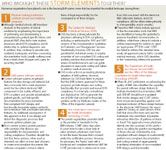Article
The problem with EHRs and coding
Something has gone awry to create an environment that leaves well-intended physicians victimized when government audits reveal their software systems have allowed-even facilitated-submission of non-compliant and potentially fraudulent claims.

Key Points
Today's political and economic environment has focused a spotlight on healthcare reform and the promotion of health information technology in particular. The Obama administration has promised to invest $10 billion per year over the next five years on HIT, including electronic health records. Senator Max Baucus, chairman of the Senate Finance Committee, says HIT represents "the beginning of healthcare reform and a key part of the economic recovery."
The Centers for Medicare & Medicaid Services (CMS) is also exerting increasing pressure on physicians to purchase HIT: financial incentives for using electronic prescribing through 2013 and rising penalties to practices that fail to employ this technology starting in 2012. The administration's stimulus package provides incentives for implementing and using certified EHR systems, while those practices that don't adopt these systems by 2014 will receive reductions in reimbursement.
Health policy advocates justifiably point to a myriad of potential benefits that should result from the widespread implementation of EHRs, from safe storage of health information to electronic sharing of clinical information. The knowledge shared through this access to patients' medical data promises to improve patient safety and reduce costs associated with duplicate and/or unnecessary tests and treatments. Electronic prescribing further promises to reduce medication errors, ranging from drug interactions to misinterpreted handwriting.
Likewise, most physicians include among their highest priorities the goal of compliant evaluation and management (E/M) coding. Physicians believe they have a right to expect that these sophisticated and costly systems will ensure that they achieve compliant documentation and coding, thereby "making any E/M problems go away."
However, something has gone awry to create an environment that leaves well-intended physicians victimized when government audits reveal their software systems have allowed-even facilitated-submission of non-compliant and potentially fraudulent claims for E/M services. In the midst of increasing storm warnings of non-compliant designs, physicians are increasingly vulnerable to severe financial penalties.






